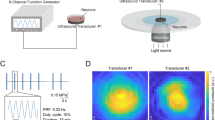Abstract
Many transport processes in biological membranes show a saturation of transport rate when the concentration of the transported ions or molecules is sufficiently increased. Saturation will result when at high concentrations a translocation step which does not directly depend on bulk concentration becomes rate limiting, and it is expected for all multi-step translocation mechanisms. However, a possible alternative explanation for saturation is a regulatory process which decreases the number of translocating channels in response to an increase in bulk concentration of the transported species. In the frog epidermis, Na+ uptake from the extracellular space into the epithelial cytosol occurs through Na+-selective, passively conducting channels located in the apical membrane of the cells directly below the cornified outer cell layer. Saturation of transport occurs with increasing outer Na+ activity ([Na]o): the net Na+ current1,2, membrane conductance2,3 and unidirectional Na+ influx4 increase only subproportionally with [Na]0. The apical Na+ current can transiently be larger than the saturation value, suggesting that a fixed upper single channel transport rate is not responsible for the saturation, and it has, therefore been suggested that in this case saturation occurs through a [Na]o-dependent decrease in channel density2. The Na+-translocation process can be investigated by a statistical evaluation of spontaneous transport fluctuations. The reversible transport blocker amiloride can be used to induce random fluctuations of the Na+ current at the apical membrane. The power density spectrum of these fluctuations is of the lorentzian type and permits an estimation of the Na+ current which passes through individual translocators in the time intervals between blocks5. We have recorded the current fluctuations at different [Na]o values and different amiloride concentrations in the [Na]o range in which saturation of total Na+ current is observed. We report here that the density of the conducting pores decreases with increasing [Na]o.
Similar content being viewed by others
References
Cereijido, M., Herrera, F. C., Flanigan, J. W. & Curran, P. F. J. gen. Physiol. 47, 879–893 (1964).
Fuchs, W., Hviid Larsen, E. & Lindemann, B. J. Physiol., Lond. 267, 137–165 (1977).
Gebhardt, U., Fuchs, W. & Lindemann, B. Role of Membranes in Secretory Processes, 284–300 (North–Holland, Amsterdam, 1972).
Biber, U. L. T. & Curran, P. F. J. gen. Physiol. 56, 83–99 (1970).
Lindemann, B. & Van Driessche, W. Science 195, 292–294 (1977).
Owen, H. The Physical Chemistry of Electrolytic Solutions (Reinhold, New York, 1967).
Van Driessche, W. & Lindemann, B. Rev. scient. Instrum. 49, 32–37 (1978).
Van Driessche, W. & Gögelein, H. Nature 275, 665–667 (1978).
Author information
Authors and Affiliations
Rights and permissions
About this article
Cite this article
Van Driessche, W., Lindemann, B. Concentration dependence of currents through single sodium-selective pores in frog skin. Nature 282, 519–520 (1979). https://doi.org/10.1038/282519a0
Received:
Accepted:
Published:
Issue Date:
DOI: https://doi.org/10.1038/282519a0
- Springer Nature Limited
This article is cited by
-
Effect of oxytocin on transepithelial transport of water and Na+ in distinct ventral regions of frog skin (Rana catesbeiana)
Journal of Comparative Physiology B (1996)
-
Effect of dexamethasone on sodium channel block and densities in A6 cells
Pflügers Archiv (1995)
-
Regulation of Na+ channels in the cortical collecting duct by AVP and mineralocorticoids
Kidney International (1992)
-
Amiloride blockage of Na+ channels in amphibian epithelia does not require external Ca2+
Pflügers Archiv (1991)
-
The key role of the mitochondria-rich cell in Na+ and H+ transport across the frog skin epithelium
Pfl�gers Archiv European Journal of Physiology (1989)





